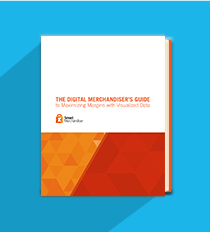
In the digital age, it’s hard to pay attention to anything for more than a few seconds. For digital merchandisers, it’s imperative that sites are designed to captivate and draw in consumers. Using dynamic merchandising software helps merchandisers ensure their site engages site visitors immediately. When deciding which software is the best for your online store, consider if it has the following features to get a versatile tool.
1. Visual Catalog Management
This feature allows you to view your product catalog the way your website visitors do. It makes it easy for you to manage and rearrange your product catalog by allowing you to add and remove products or even copy products. The best catalog management tools have a user-friendly interface that lets you drag and drop products without worrying about the layout.
2. Seamless Management of Website Analytics
Website analytics are the lifeline of any online store. It allows you to analyze shopping trends, visitors’ habits, bounce rate, sales revenue and conversion rate. Its functionality is integrally tied to your store's performance and is easily among the most important online merchandising software features to have in your arsenal. Your chosen software should let you analyze data effortlessly.
Data overlays on each product make it easy to get the valuable data you require at a click of button. While you're looking for analytics tools, consider tools that deliver data visually.
3. Effortless Inventory Management
A slow shelf-velocity is detested by online merchandisers, but one that moves too fast can damage your customers' trust. Online merchandising software should allow you to manage and optimize your webstore’s inventory by warning you when inventory is low. This allows you to replenish stock and offer your customers a better shopping experience.
4. Improved Color Management
Color management helps you highlight products that are trending and popular while allowing you to place products below the fold that are not in the season or are not top-sellers. The ideal software allows you to sequence color swatches with a touch of a button or even categorize products based on their color.
5. Social Media Integration
Online merchandisers and retailers already know the importance of social networking sites, such as Facebook and Twitter -- consumers use these platforms to talk about products and brands. Online merchandising software should have a feature that combines the analytics aspect of your store with social media scores. It should allow you to check the likes, reviews and ratings and highlight high performers.
6. Manage Attributes
Every product has attributes, such as material and color. Merchandising software should make it possible for you to assign attributes to each product to make it easy for customers to find the products they want. The attributes shouldn’t be presented in complicated spreadsheets. Rather, they should be available in a visual format to make the merchandiser’s job easier.
7. Personalizing the Customer Shopping Experience
Online merchandising software should allow merchandisers to personalize customer shopping experiences. Software that provides extensive data on your customer's purchasing habits fuel you with the power to make upsell suggestions or offer targeted promotions.
If you are going to do something, do it well. Online merchandising shouldn’t be an exception. Don't waste time on software that takes too much of yours to use.
Improving profit margins is at the top of all eCommerce merchandiser’s to-do lists which is why we’ve created The Digital Merchandiser’s Guide to Maximizing Margins with Visualized Data eBook.
Download the eBook to learn more!


